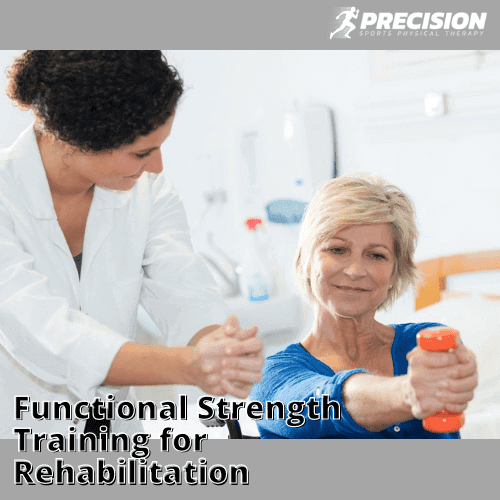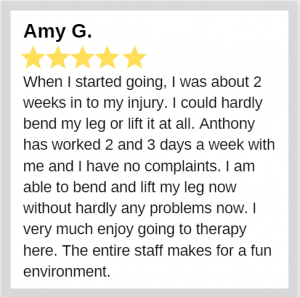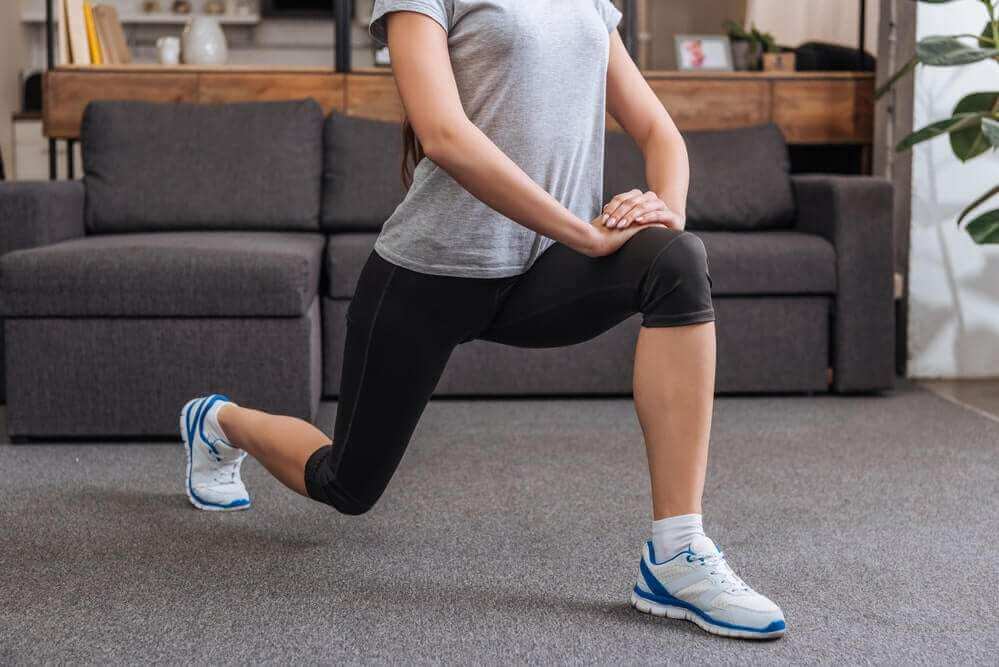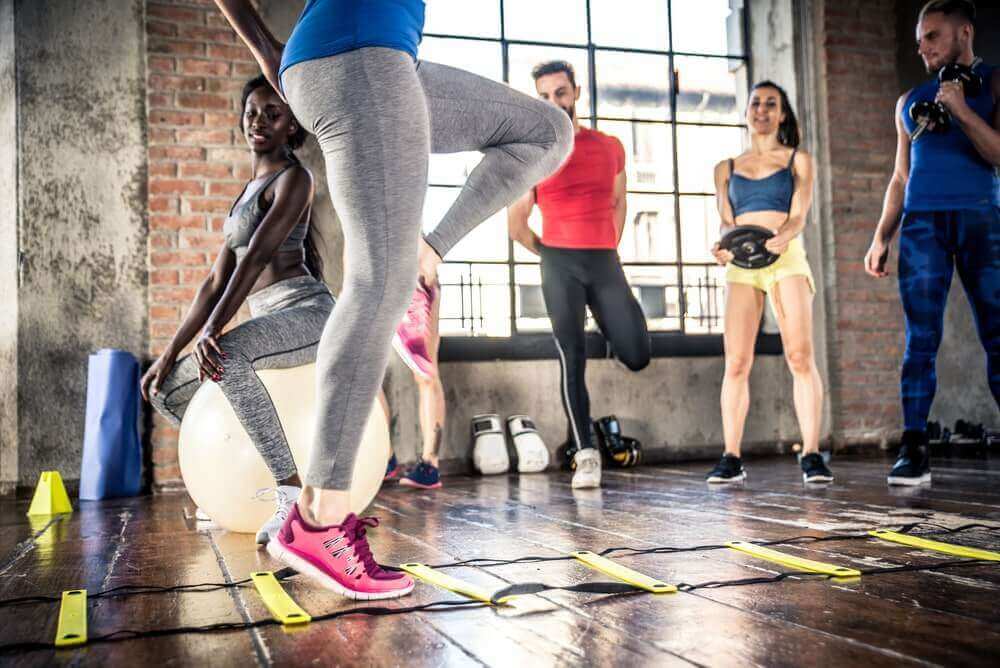
Functional Strength Training For Rehabilitation
Whether it’s getting stronger at doing daily activities or preparing for a competitive sport, functional strength training is a workout program that can help many people.
It’s the type of training that can improve overall health, optimize movement, and make you aware of your body’s capabilities and how you can enhance it – so you can live an optimal life.
In today’s post, let’s take an in-depth look at what functional strength training is, what it entails, how it is used for rehabilitation, and the many benefits this workout routine offers.
Functional Strength Training: Beyond Working Out
Simply put, this type of workout revolves around utilizing functionality as its primary purpose. It’s not merely a buzzword or a catchphrase designed to lure you into the next workout craze.

The uncertain origin of the phrase came out between the 1980s and 1990s. From then, it boomed into the mainstream fitness and workout space.
However, the idea that fitness and exercise play a significant role in medicine and rehabilitation has long existed.
Some even date it back to the Ancient Greeks in the seventh century.
Most of their way of life placed significant importance on calisthenics and training. Following this, the movement grew when early physicians began looking into prescribing some forms of exercises and stretches for functional purposes.
These functional purposes mean addressing some form or type of weakness or eradicating any illnesses in many cases. Functional strength exercises were interspersed with some amount of gymnastics or calisthenics.
When done correctly, functional strength training can help improve posture, increase strength and flexibility, and prevent injuries.
Because of the rehabilitation and medicinal benefits, this fitness regime offers, fitness peddlers – those with no real qualifications to prescribe fitness workout routines – have used and abused this term.
Nevertheless, many qualified and experienced health and medical professionals can provide customized functional strength training suited for you.
Before you can get this tailor-made program, a health professional will need to assess your current physical condition, physical capabilities, limitations, and overall physical fitness goals.
The frequency and level of the training will change over time, depending on your progress.
Improving Your Well-Being
Aside from correcting your movements, the goal of this type of strength training is to improve your overall well-being.

When you undergo a functional training program personalized for you, you can elevate your fitness capacities and translate them into doing everything better.
These activities include the everyday, regular tasks – those that are outside your fitness routines.
In turn, you are positively affecting your daily life.
You can do the household chores without back pain. You can climb the stairs without knee pain. You can pick up things or move objects quickly. All these regular activities are made easier with stretches and exercises included in a functional training program.
Getting Stronger with Functional Strength Training
More and more health and fitness professionals are recommending incorporating functional training into their workout programs. These workout programs are more accessible to people. Some gyms and fitness studios even have installed functional strength training equipment.
A physical therapist will prescribe custom functional strength training after evaluating a patient when it comes to rehabilitation. Ultimately, the goal is injury rehabilitation and chronic pain management.
The benefits that come with this goal include:
- Improving daily movements
- Enhancing posture
- Increasing strength
- Enhancing flexibility
- Preventing injuries
- Addressing any weak points in the body
- Eradicating illnesses
Is Functional Strength Training Right for Me?
Before you participate in any workout or fitness program that involves a moderate to vigorous routine, it’s best to consult with your doctor or healthcare provider first.
On top of that, if you have a history of health concerns or issues, or if it’s been a while since you’ve done any workout routine or exercise program, we recommend that you reach out to your doctor before taking part in a new training program.
Having said that, functional strengthening is a training program that adults – even seniors – could reap benefits from. And the good news is it’s never too late to start it.
The American Journal of Health Promotion conducted a study that showed adults between the ages of 65 and 93 showed improved functionality after participating in a structured exercise program.
This program lasted for 16 weeks and consisted of different strengthening exercises.
The good news is you don’t have to have specialized strength training equipment to get started with functional strengthening. It’s an accessible type of training program.
If you do need some equipment, you can opt for at-home workout tools such as resistance bands or kettlebells.

The specific type of strengthening training you need to do will depend on the following factors:
- Your age
- Your fitness levels
- Your current health conditions
- Your health goals
This is why it’s essential to consult with a physical therapist or a certified fitness professional before you do this workout program.
Your goals will dictate the effectiveness of this training. If you want to aim to develop stability, endurance, and power, functional strengthening is ideal.
However, if you’re looking to build muscles or a muscle group in a particular area of the body, it might be better to go with traditional strength training.
Whether you need an athletic-specific training routine to enhance your performance or simply want to improve your daily movements to improve your quality of life – your health and fitness professionals will assess your needs and goals.
Essentially, functional strengthening training enhances the performance of your daily movements to better your quality of life.
What Are Functional Strength Exercises?
This type of training program emphasizes movement patterns with a purpose. When doing functional strength workouts, you are utilizing multiple muscle groups.
You are most likely balancing on one foot, kneeling, standing, or more instead of when you’re seated in a solitary position when using a piece of workout equipment.
Functional strengthening exercises can be adapted to circuit training or high-intensity interval training (HIIT). You can quickly build the workouts to build full-body strength.
The routine focuses on:
- Full body strengthening to do movements that can help you in your daily life and activities
- Engaging several muscle groups in one exercise or movement
- Utilizing your own stability, flexibility, and bodyweight
Beginner Functional Strengthening
As a beginner, you need to focus on following basic movement patterns. As you do this, you’re also gaining control of your muscles.
Intermediate Functional Strengthening
As an intermediate functional strength trainee, you’ve mastered doing two differing workouts, think squatting and pulling on the same session. You will need to spread out the workout between body parts to allow for sufficient recovery.
Advanced Functional Strengthening
This level of training entails partnering with high-level health and fitness coaches to aid their workouts.
What Does Functional Strength Training Include?
The following are the basic exercises included in functional strength training. Consult your physical therapist or fitness specialist. They can customize a training program tailormade for you to maximize and take advantage of the full benefit of this fitness program.
- Squat
- Lunge
- Push
- Pull
- Bend
- Core
You can perform these core functional strengthening workouts without any equipment.

However, if tools are accessible, you can use kettlebells, sandbags, medicine balls, bodyweight, dumbbells, resistance bands, or a combination of those in a single functional workout.
Additionally, you can add equipment in functional strengthening foundational moves such as lunges, burpees, and renegade rows.
Either way, you focus on multiple muscle groups, which leads to developing full-body strength in every session.
Taking part in this training program can be done in your home gym or garage gym, big-box gyms such as Gold’s or Anytime Fitness, campus gyms, functional fitness gyms, school recreation centers, physical therapy rehabilitation centers, or anywhere with some free weights and open space.

Your fitness trainer or physical therapist will assign movement patterns with strong consideration of what you are capable of.
Over time and as you get stronger, your workout routine will also progress and adapt to your current level of functionality.
What Does Functional Training Mean?
Functional training sessions will typically be made up of compound exercises. These include lunges, squats, and deadlifts.
These are the type of exercises that train multiple muscle groups. They are also exercises that mimic daily movement routines such as pulling, pushing, squatting, rotating, or hinging.
Most functional training workouts incorporate rotational movements, moving side to side, and moving forward and backward.
For this reason, functional strength training utilizes free weights – not workout machines.
Machines limit your movement when working out, and that’s not the goal of functional activity.

Simply put, using a machine when working out does not mirror your daily movement patterns.
For instance, think of using the leg extension machine. No daily movement pattern uses just your quads.
You need to use your core, hamstrings, and glutes.
A squat is precisely the type of strength training workout that fits this description. This exercise will also allow you to train those muscle groups to work together more efficiently.
Key Takeaway About Functional Strength Training
When you understand the goal and purpose of this type of training workout, it’s easy to recognize the many benefits it offers.

Functional strength training helps you get stronger and live life easier by moving correctly.
From climbing the stairs to carrying groceries to completing household chores and doing other day-to-day physical activities – you can do all this with minimal risk of pain or injury when you have a consistent functional strength training routine.
It focuses on improving your movement the same way as it is used for injury rehabilitation and pain management treatment.
At Precision Sports Physical Therapy, our goal is to help improve your functionality so you can live a fit, healthy, and optimal life.
[do_widget id=recent-posts-2]
[do_widget id=categories-2]
© 2019, precision sports physical therapy. all rights reserved.
WE CAN DO ALL THINGS THROUGH CHRIST, WHO STRENGTHENS US.
